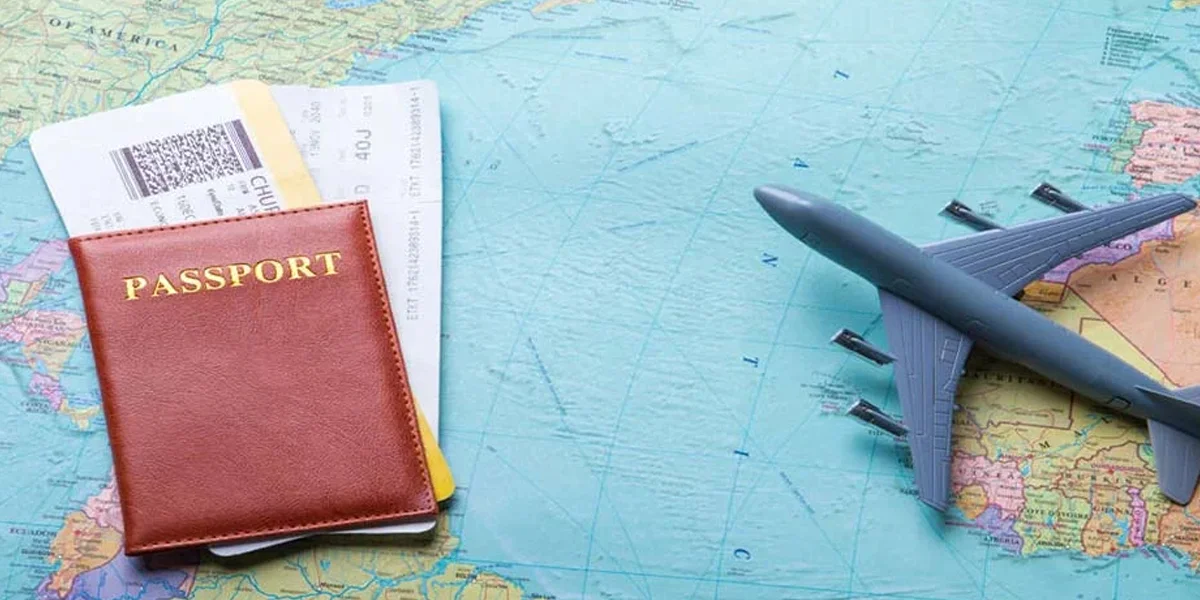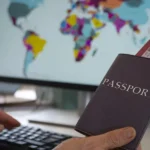
By, Gokite Tour
- 1.1k Views
- 6 Min Read
- (0) Comment
Different Types of China Travel Visas Explained
Planning a trip to China, whether for tourism, business, work, or study, requires you to first obtain the correct visa. With a rich history, vibrant culture, and fast-growing economy, China welcomes millions of visitors each year. Understanding the types of China travel visas is crucial to ensure you have a smooth and hassle-free experience when entering this vast and diverse country. Whether you are visiting the Great Wall, attending trade shows in Guangzhou, or studying in Beijing, choosing the right visa type will depend on your purpose of travel and duration of stay.
Many travelers often ask, “Which China visa is easiest to get?” The answer depends on your personal circumstances, the documents you can provide, and the intent of your visit. In this detailed guide, we will walk you through the types of travel visa to China, the eligibility requirements, and the overall application process. We will also answer common questions such as “How many visa types are there in the China?” so you are fully informed and ready to plan your visit.
How Many Visa Types Are There in the China?
To answer one of the most frequently asked questions — “How many visa types are there in the China?” — it is important to note that China currently issues around 16 main categories of travel visas, each designed for a different purpose. These categories are identified by letter codes, such as L, M, F, X, Z, Q, S, G, C, D, J, and R, among others.
Each visa type is tailored to accommodate tourists, business professionals, students, workers, journalists, or individuals visiting family members. Below is an in-depth explanation of the major types of China travel visas ,including their specific purposes and eligibility.
1. L Visa (Tourist Visa)
The L Visa is one of the most popular and straightforward types of China travel visas. It is issued to individuals traveling for tourism, sightseeing, or to visit friends and relatives. This is also generally considered the easiest China visa from oman to get if you can provide proof of hotel bookings, return tickets, and financial means. L visas can be single-entry, double-entry, or multiple-entry, typically valid for 30 to 90 days per visit.
2. M Visa (Business Visa)
The M Visa is issued to foreign nationals visiting China for commercial or trade activities. This visa is ideal for businesspeople attending trade shows, meetings, or negotiations. To apply, an invitation letter from a Chinese company or trade organization is required. Many applicants consider the M visa a relatively easy China travel visa to get, particularly for frequent business travelers.
3. F Visa (Non-Commercial Exchange Visa)
The F Visa caters to foreigners visiting China for non-commercial purposes such as research, scientific exchanges, cultural exchanges, or educational visits. An invitation letter from a Chinese host institution is mandatory for this visa type.
4. X Visa (Student Visa)
The X Visa is for foreign nationals who intend to pursue academic studies in China. There are two types of X Visas:
- X1 Visa: For long-term study (more than 180 days).
- X2 Visa: For short-term study (less than 180 days).
To apply, applicants need an official admission notice from a Chinese educational institution and a visa application for study in China form (JW201 or JW202).
5. Z Visa (Work Visa)
The Z Visa is issued to foreigners who will be working in China. This is a long-term visa that requires securing a job offer from a licensed employer in China and obtaining a work permit. The Z Visa allows for legal employment and is often converted into a residence permit once the applicant arrives in China.
6. Q Visa (Family Reunion Visa)
The Q Visa is designed for family members of Chinese citizens or foreigners who hold permanent residence status in China. There are two types:
- Q1 Visa: For long-term family reunions (over 180 days).
- Q2 Visa: For short-term visits (less than 180 days).
7. S Visa (Private Visit Visa)
The S Visa is granted to foreign nationals who visit family members working or studying in China. Similar to the Q Visa, it is divided into:
- S1 Visa: For long-term visits.
- S2 Visa: For short-term private visits.
8. G Visa (Transit Visa)
The G Visa is for foreign nationals transiting through China en route to a third country. The transit visa is generally valid for a short period (up to 7 days). Depending on your nationality, you may also be eligible for a transit visa exemption.
9. C Visa (Crew Visa)
The C Visa is granted to crew members of international airlines, trains, ships, or other transport personnel engaged in cross-border transport activities.
10. D Visa (Permanent Residence Visa)
The D Visa is a permanent residence visa for foreigners who have been approved to reside permanently in China. This visa is relatively rare and requires meeting strict criteria.
11. J Visa (Journalist Visa)
The J Visa is issued to foreign journalists. It is divided into:
- J1 Visa: For resident correspondents (long-term).
- J2 Visa: For short-term news coverage.
12. R Visa (Talent Visa)
The R Visa is granted to highly skilled foreign professionals whose expertise is urgently needed in China. These visas are prioritized under China’s initiative to attract global talent.
Conclusion
Choosing the right visa is essential for a smooth entry into China. As we’ve explained, there are many types of travel visa to China depending on your travel intent — whether it’s tourism, business, study, work, or family visits. The L Visa and M Visa are typically regarded as the easiest China visas to get for short-term visitors and business professionals.
If you’re still wondering, “How many visa types are there in the China?”, the answer is at least 16 distinct visa types — each with its own specific eligibility requirements and application procedures. Whether you are visiting the iconic landmarks or building new business relationships, securing the appropriate visa is your first step to discovering everything China has to offer.
FAQs
Q1. How many visa types are there in the China?
There are around 16 main types of travel visa to China, including tourist (L), business (M), student (X), work (Z), family reunion (Q), and many others designed to meet specific travel purposes.
Q2. Which China visa is easiest to get?
For most travelers, the L Visa (Tourist Visa) is generally considered the easiest China visa to get as long as you meet the basic requirements of having travel bookings and proof of financial means.
Q3. Can I apply for a China visa online?
Currently, many Chinese consulates allow online appointment booking and form submissions, but you will usually need to visit a consulate or authorized visa application center to submit your passport and biometric data.
Q4. How long does it take to process a China visa?
Processing times vary by location and visa type, but most applications are processed in about 4–7 working days, with express and rush services available for an additional fee.
Q5. Do I need an invitation letter for a China tourist visa?
Not necessarily. For an L Visa, you can apply with hotel bookings and return flight details. However, an invitation letter from a Chinese resident can also support your application.
Most Popular International Visas for Omanis
Mauritius visa | Mexico Visa | Mongolia visa | Montenegro Visa | Morocco visa | Netherlands visa | New Zealand Visa | Nigeria Visa | Norway visa | Oman Visa | Peru Visa | Philippines Visa | Poland visa | Portugal Visa | Qatar visa | Russia visa | Saudi Arabia Visa
How to Apply visa for other countries
Schengen visa | Singapore visa | South Africa visa | South korea visa | Spain visa | Sri lanka visa | Sweden Visa | Switzerland visa | Thailand Visa | Turkey visa | UK Visa | Uruguay visa | US visa | Vietnam visa | Uzbekistan Visa
Recommended Read: Complete Visa Information for China Travellers





Leave a comment:
You must be logged in to post a comment.